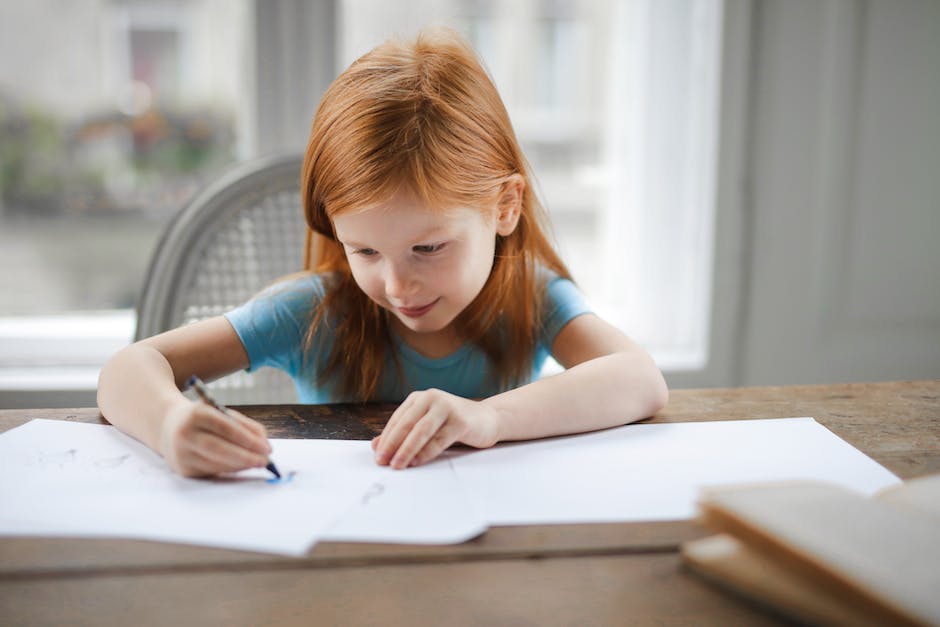Table of Contents
- Introduction
- The Importance of Art Education in Developing Creativity and Imagination
- How Art Education Enhances Critical Thinking and Problem-Solving Skills
- Incorporating Art Education to Foster Cultural Awareness and Diversity
- The Role of Art Education in Promoting Emotional Well-being and Self-expression
- Q&A
- Conclusion
Nurturing Creativity and Imagination: Unleash the Artist Within.
Introduction
Art education plays a crucial role in nurturing creativity and imagination in individuals. By providing a platform for self-expression and exploration, it encourages individuals to think critically, problem-solve, and communicate their ideas visually. Through various artistic mediums, art education fosters the development of essential skills such as observation, interpretation, and innovation. Moreover, it promotes cultural understanding, empathy, and appreciation for diverse perspectives. Overall, art education empowers individuals to embrace their creativity, think outside the box, and contribute to the enrichment of society.
The Importance of Art Education in Developing Creativity and Imagination

Art Education: Nurturing Creativity and Imagination
Art education plays a crucial role in the development of creativity and imagination in individuals. It provides a platform for self-expression, encourages critical thinking, and fosters problem-solving skills. In today’s fast-paced and technology-driven world, where standardized tests and academic achievements often take precedence, the importance of art education should not be overlooked.
Creativity and imagination are essential skills that enable individuals to think outside the box, come up with innovative ideas, and approach problems from different perspectives. Art education provides a safe and supportive environment for students to explore their creativity and imagination. Through various art forms such as painting, drawing, sculpture, and music, students can express their thoughts, emotions, and ideas in a non-verbal and non-linear manner.
Moreover, art education encourages critical thinking by challenging students to analyze and interpret visual information. When students engage with artworks, they are prompted to think critically about the artist’s intentions, the historical and cultural context, and the underlying messages conveyed. This process of analysis and interpretation enhances their ability to think critically and make informed judgments, skills that are valuable in all aspects of life.
Art education also fosters problem-solving skills. When creating art, students are faced with various challenges and obstacles that require them to think creatively and find innovative solutions. They learn to experiment, take risks, and adapt their approach when faced with unexpected outcomes. These problem-solving skills are transferable to other areas of life, such as academics, work, and personal relationships.
Furthermore, art education nurtures empathy and emotional intelligence. Through art, students can explore different perspectives, cultures, and experiences. They learn to appreciate diversity and develop a sense of empathy towards others. Art also provides a means for students to express and process their own emotions, helping them develop emotional intelligence and self-awareness.
Research has shown that art education has numerous benefits beyond the development of creativity and imagination. It has been linked to improved academic performance, increased self-esteem, and enhanced social skills. Students who engage in art education are more likely to excel in other subjects, as art stimulates the brain and enhances cognitive abilities. Additionally, art education provides a sense of accomplishment and pride, boosting students’ self-esteem and confidence.
Moreover, art education promotes collaboration and teamwork. In group art projects, students learn to communicate effectively, listen to others’ ideas, and work together towards a common goal. These collaborative skills are essential in today’s interconnected world, where teamwork and cooperation are highly valued.
In conclusion, art education is of utmost importance in nurturing creativity and imagination in individuals. It provides a platform for self-expression, encourages critical thinking, fosters problem-solving skills, and promotes empathy and emotional intelligence. The benefits of art education extend beyond the development of artistic skills, impacting academic performance, self-esteem, and social skills. As educators and policymakers, it is crucial to recognize and prioritize the role of art education in shaping well-rounded individuals who can thrive in the 21st century.
How Art Education Enhances Critical Thinking and Problem-Solving Skills
Art Education: Nurturing Creativity and Imagination
Art education plays a crucial role in the development of critical thinking and problem-solving skills. By engaging in artistic activities, students are encouraged to think outside the box, explore different perspectives, and find innovative solutions to complex problems. This article will delve into the ways in which art education enhances critical thinking and problem-solving skills, highlighting the research that supports these claims.
One of the key ways in which art education fosters critical thinking is by encouraging students to analyze and interpret visual information. When students engage with artworks, they are prompted to observe, question, and make connections between various elements. This process of visual analysis helps them develop their ability to think critically and make informed judgments. Research conducted by the National Art Education Association has shown that students who receive art education demonstrate higher levels of critical thinking skills compared to those who do not.
Moreover, art education provides students with opportunities to engage in open-ended problem-solving. Unlike traditional academic subjects that often have a single correct answer, art allows for multiple interpretations and solutions. Through art-making, students learn to embrace ambiguity and uncertainty, which are essential skills in today’s rapidly changing world. They are encouraged to experiment, take risks, and learn from their mistakes. This process of trial and error helps them develop resilience and adaptability, qualities that are highly valued in problem-solving.
Furthermore, art education promotes divergent thinking, which is the ability to generate multiple ideas and solutions. In a study published in the Journal of Educational Psychology, researchers found that students who participated in art classes demonstrated higher levels of divergent thinking compared to those who did not. By engaging in creative activities, students learn to think flexibly and generate a wide range of ideas. This skill is particularly valuable in problem-solving situations that require innovative and unconventional approaches.
Art education also fosters critical thinking by encouraging students to reflect on their own work and the work of others. Through self-reflection, students develop metacognitive skills, which involve thinking about their own thinking. They learn to evaluate their artistic choices, identify areas for improvement, and set goals for future projects. Additionally, by studying the work of other artists, students gain exposure to different styles, techniques, and cultural perspectives. This exposure broadens their understanding of the world and enhances their ability to think critically and empathetically.
In conclusion, art education is a powerful tool for enhancing critical thinking and problem-solving skills. By engaging in artistic activities, students develop their ability to analyze visual information, engage in open-ended problem-solving, think divergently, and reflect on their own work. The research supports the positive impact of art education on critical thinking, highlighting its role in nurturing creativity and imagination. As educators and policymakers, it is crucial to recognize the importance of art education and ensure its inclusion in the curriculum to prepare students for the challenges of the 21st century.
Incorporating Art Education to Foster Cultural Awareness and Diversity
Art Education: Nurturing Creativity and Imagination
Incorporating Art Education to Foster Cultural Awareness and Diversity
Art education plays a crucial role in fostering cultural awareness and diversity among students. By incorporating art into the curriculum, educators can provide students with a unique opportunity to explore different cultures, traditions, and perspectives. This not only enhances their understanding of the world but also nurtures their creativity and imagination.
Art has the power to transcend language barriers and communicate emotions and ideas in a universal way. Through art, students can express their thoughts and feelings, and gain a deeper understanding of themselves and others. By engaging in artistic activities, students are encouraged to think critically, problem-solve, and make connections between different subjects.
One of the key benefits of incorporating art education is the promotion of cultural awareness. Art allows students to explore different cultures, traditions, and historical events through visual representations. By studying art from various cultures, students gain a broader perspective and develop a sense of empathy and respect for diversity. They learn to appreciate the beauty and uniqueness of different artistic styles and techniques, and understand the historical and cultural contexts in which they were created.
Art education also provides a platform for students to express their own cultural identities. By creating art that reflects their own experiences and backgrounds, students can celebrate their heritage and share their stories with others. This not only helps them develop a sense of pride and self-confidence but also encourages dialogue and understanding among their peers.
Furthermore, art education promotes creativity and imagination. In a world that increasingly values innovation and originality, nurturing these skills is essential. Through art, students are encouraged to think outside the box, experiment with different materials and techniques, and take risks. This fosters a sense of curiosity and exploration, which are vital for personal and intellectual growth.
Art also encourages students to develop their own unique voice and perspective. By creating art, students learn to trust their instincts, make independent decisions, and express their ideas in a visual form. This not only enhances their self-expression but also helps them develop critical thinking skills and the ability to communicate effectively.
Incorporating art education into the curriculum can be done in various ways. Educators can integrate art projects into different subjects, such as history, literature, or science, to provide a multidisciplinary approach. They can also invite artists and cultural experts to give presentations or workshops, allowing students to learn directly from professionals in the field. Additionally, schools can organize art exhibitions or cultural events to showcase students’ work and promote dialogue and understanding among the school community.
In conclusion, art education is a powerful tool for nurturing creativity, imagination, and cultural awareness among students. By incorporating art into the curriculum, educators can provide students with a unique opportunity to explore different cultures, traditions, and perspectives. This not only enhances their understanding of the world but also fosters empathy, respect, and appreciation for diversity. Art education encourages students to think critically, problem-solve, and express themselves in a visual form. It provides a platform for students to celebrate their own cultural identities and share their stories with others. By embracing art education, schools can create a more inclusive and culturally rich learning environment for all students.
The Role of Art Education in Promoting Emotional Well-being and Self-expression
Art Education: Nurturing Creativity and Imagination
Art education plays a crucial role in promoting emotional well-being and self-expression. Through various artistic activities, individuals are able to explore their emotions, express themselves freely, and develop a sense of identity. This article will delve into the importance of art education in fostering emotional well-being and self-expression, highlighting the benefits it brings to individuals of all ages.
Art has long been recognized as a powerful tool for emotional expression. Whether it is through painting, drawing, sculpture, or any other form of artistic expression, individuals are able to communicate their innermost thoughts and feelings. Art provides a safe and non-judgmental space for individuals to express themselves, allowing them to release pent-up emotions and gain a sense of relief. This process of emotional release can be particularly beneficial for individuals who struggle with verbal communication or find it difficult to express their emotions in words.
Moreover, art education encourages individuals to explore their own unique identities. Through artistic activities, individuals are able to discover their interests, passions, and talents. This self-discovery process not only helps individuals develop a sense of self, but also boosts their self-esteem and confidence. By engaging in art, individuals are able to see their own capabilities and potential, which in turn enhances their overall well-being.
Art education also fosters creativity and imagination. By encouraging individuals to think outside the box and explore new ideas, art education helps to develop critical thinking skills and problem-solving abilities. Through artistic activities, individuals are able to experiment with different materials, techniques, and concepts, allowing them to develop their own unique artistic style. This process of creative exploration not only enhances individuals’ artistic abilities, but also nurtures their ability to think creatively in other areas of their lives.
Furthermore, art education provides individuals with a sense of accomplishment and pride. When individuals create something with their own hands, they experience a sense of achievement and satisfaction. This feeling of accomplishment boosts individuals’ self-confidence and motivates them to continue exploring their artistic abilities. Additionally, art education provides individuals with opportunities to showcase their work, whether it is through exhibitions, performances, or competitions. This recognition and validation of their artistic efforts further enhances individuals’ emotional well-being and self-expression.
Art education is not limited to a specific age group. It is beneficial for individuals of all ages, from young children to older adults. For children, art education helps to develop their fine motor skills, hand-eye coordination, and cognitive abilities. It also encourages their imagination and creativity, allowing them to explore and make sense of the world around them. For older adults, art education provides a means of self-expression and a way to stay mentally active and engaged.
In conclusion, art education plays a vital role in promoting emotional well-being and self-expression. Through artistic activities, individuals are able to explore their emotions, express themselves freely, and develop a sense of identity. Art education fosters creativity, imagination, and critical thinking skills, while also providing individuals with a sense of accomplishment and pride. Regardless of age, art education has numerous benefits that contribute to individuals’ overall well-being. Therefore, it is essential to recognize the importance of art education and ensure its inclusion in educational curricula and community programs.
Q&A
1. What is art education?
Art education refers to the teaching and learning of various artistic disciplines, such as visual arts, music, dance, and theater, with the aim of nurturing creativity and imagination in individuals.
2. Why is art education important?
Art education is important as it helps individuals develop their creative and imaginative abilities, enhances critical thinking and problem-solving skills, fosters self-expression and communication, and promotes cultural understanding and appreciation.
3. How does art education nurture creativity?
Art education provides individuals with opportunities to explore different artistic mediums, experiment with ideas, and think outside the box. It encourages individuals to take risks, embrace mistakes, and develop their unique artistic voice, thus nurturing creativity.
4. What are the benefits of art education?
Art education offers numerous benefits, including improved cognitive abilities, enhanced motor skills, increased self-confidence and self-esteem, better emotional expression and regulation, and a deeper understanding and appreciation of art and culture.
Conclusion
In conclusion, art education plays a crucial role in nurturing creativity and imagination. It provides individuals with the opportunity to explore their artistic abilities, express themselves, and think outside the box. By engaging in various art forms, students develop critical thinking skills, problem-solving abilities, and the confidence to take risks. Art education also fosters cultural appreciation and empathy, as it exposes learners to different perspectives and artistic traditions. Overall, incorporating art education into the curriculum is essential for fostering creativity and imagination in individuals, enabling them to thrive in various aspects of life.





